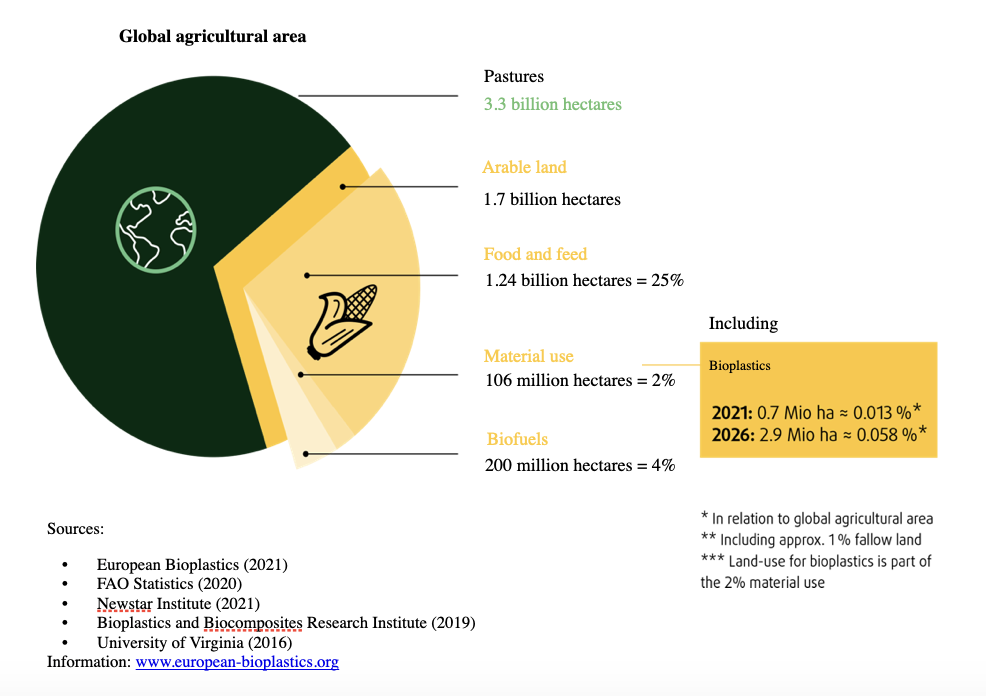
EnyoungBio®️ materials are safe for both humans and the environment. We only use materials that are considered harmless to living organisms and do not cause long-term adverse effects on the environment.
Estimates of land use for bioplastics in 2021 and 2026.
There is no competition between renewable raw materials used for food, feed, and bioplastics.
The bio-based content in the materials is determined based on one of the following criteria:
1. The ratio of biomass carbon-14 to total organic carbon (TOC) as per ASTM D6866 standards, or
2. The comparison of bio-based total mass to total mass as per ISO16620 standards.
Quantifying Sustainability: Life Cycle Assessment (LCA) Analysis
Simply claiming a product is "green," "eco-friendly," or "sustainable" is no longer sufficient, as these overused terms and claims often become meaningless. This opens the door for a more comprehensive analysis of environmental impact using solid data—ranging from raw material extraction, energy production and distribution, to product use, reuse, and final disposal.
The four stages of the Life Cycle Assessment (LCA) process are:
Goal and Scope Definition
Inventory Analysis
Impact Assessment
Interpretation
The key elements and benefits of LCA include:
Identifying opportunities to improve environmental performance at different stages of the product lifecycle
Providing decision-makers with data to support strategic planning, priority setting, and product design or redesign
Developing relevant environmental performance indicators, including technical/standard measurements
Enabling accurate and reliable claims within eco-labeling programs or environmental product declarations
Energy Efficiency
The production process of EnyoungBioⓇ biobased materials is typically more energy-efficient than traditional materials, reducing overall energy consumption.
Low Toxicity
These materials contain little to no harmful chemicals, complying with stricter environmental and health safety standards, making them suitable for medical and children's products.
Reduced Carbon Emissions
By utilizing biomass as a raw material, the carbon dioxide emissions are significantly lower, contributing to a reduced carbon footprint.
Renewable Resource Utilization
EnyoungBioⓇ promotes the use of plant-based raw materials, encouraging the recycling of agricultural waste and supporting sustainable agriculture and the green economy.
Environmental Friendliness
EnyoungBioⓇ biobased materials are sourced from renewable resources, such as plant oils, reducing dependence on petrochemical resources and lowering the carbon footprint.
Superior Performance
In certain applications, EnyoungBioⓇ biobased materials offer mechanical properties and durability that are comparable to or even exceed traditional materials, including elasticity, softness, and wrinkle resistance.
